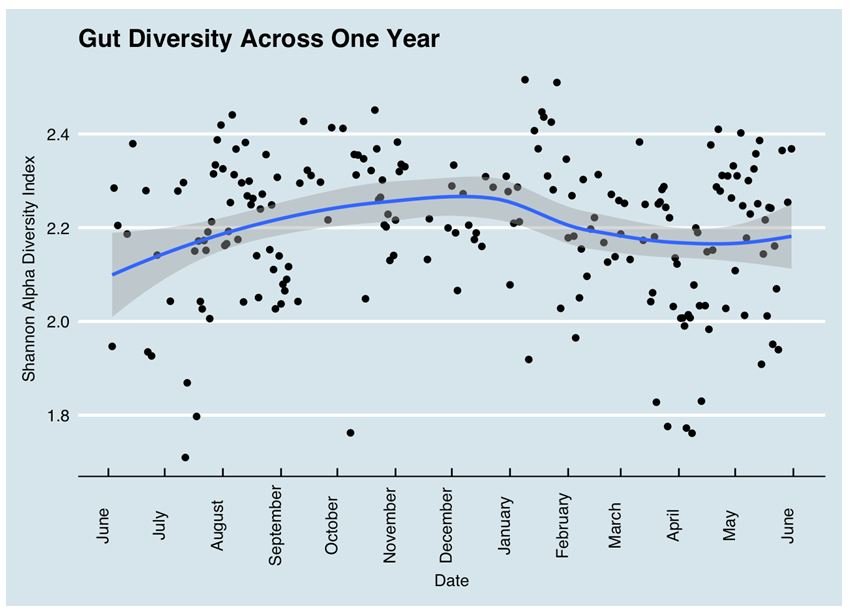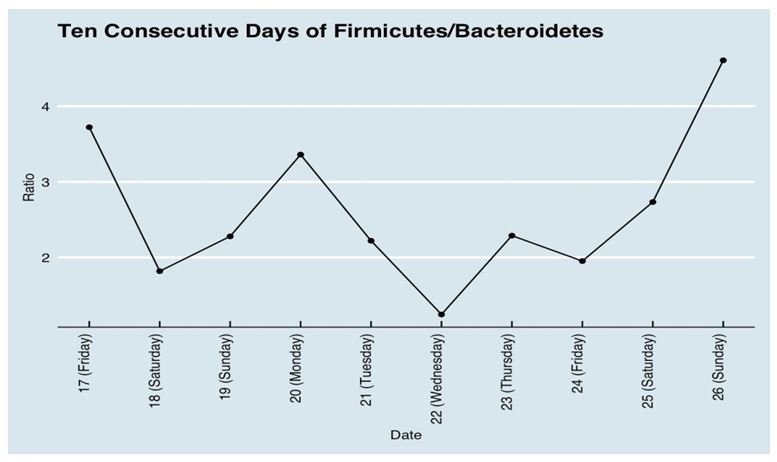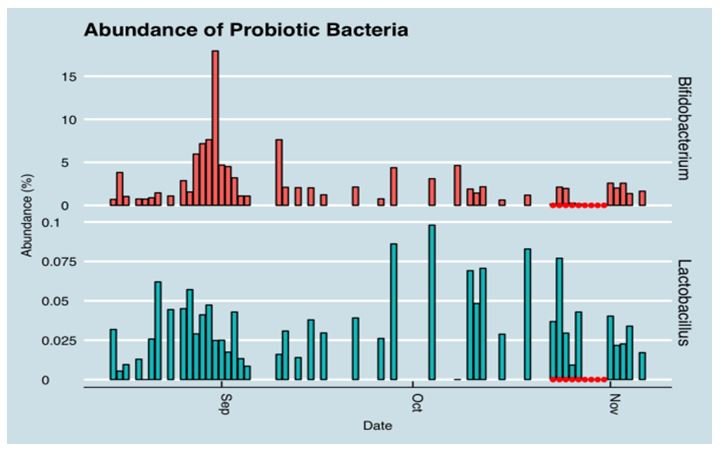The Expert Report
Mark Swanson, ND
Let me introduce Richard Sprague to the readers of The Expert Report. He is an amazing citizen scientist. I’ll start with one of his quotes regarding our topic, the gut microbiome.
Why microbiome testing is important is that unlike genomics and genetics and your human DNA, which I find very fascinating, there’s not a whole lot you can do to change it. Despite the fact that there are a lot of genes that are involved, there’s not a whole lot you can do if you find out that you’ve got the gene for this or that. Whereas with the microbiome you’ve got way more genes and you can change them. And I think those two things are part of the reason that I’m very excited about the microbiome.
(Richard Sprague)
With that said, Sprague has become a renowned expert that is making a noteworthy contribution to the exploration and understanding of the gut microbiome via his personal testing and raw-data-tracking of influences by diet, foods, prebiotic and probiotics, etc, as well as examining just how accurate and actionable microbiome testing is regarding health and wellness. What you will find here is his unique perspectives, with insights not found anywhere else. I found myself completely intrigued and wanting to continue reading, listening, and data diving, and to learn more about his personal microbiome journey.
What is your education and current position?
I’m not a scientist or a healthcare expert! I like to say that up front to emphasize that I believe science should be open to all curious people. My undergraduate degree is in computational linguistics (Stanford), and I received an MBA and MA from University of Pennsylvania, which led to a career in the consumer software industry (Apple, Microsoft, startups). I think of myself as a software engineer who turned into a high-tech executive. I’m currently CEO for Airdoc US, an AI Healthcare company.
Is it true you collected your own poop samples every day for over a year for microbiome testing? How many tests have been done so far? Are you still testing?
Yes! I’ve collected more than 600 samples since 2014. Most of that time I also carefully tracked my diet, exercise, sleep, and other variables, to study how my own microbiome changes. I don’t test daily anymore, but I still try to test at least once a month, or whenever I try something new (like a new diet).
That’s amazing! This is about a close as one gets to surfing the microbiome in real time! Let’s dive in!
Ok, ask away!
How have you compiled all these microbiome results, and why do it? What’s the single poop take-home message?
I did this because, in an environment full of so much hype about the microbiome, I wanted to see for myself what was true and what wasn’t. I’m still amazed that most people who talk about the microbiome – even doctors and other “experts” – have never actually tested themselves. Much of the research is just wrong; yet even some of the experts continue to repeat information that isn’t true. Doctors are supposed to treat the patient, not the disease. But with the microbiome they seem to forget that, just offering probiotic supplements or dietary advice based on generic information, rather than a hard look at quantifiable test results.
I did this because, in an environment full of so much hype about the microbiome, I wanted to see for myself what was true and what wasn’t.
Can diversity be accurately measured by a single test?
My experience is that science doesn’t know enough about how to measure diversity. Our current methods are so variable that it might simply be a matter of how or when they took the test. You can’t trust a single test, nor should you compare 2 tests taken under different circumstances. It’s more complicated than simply looking at the diversity number given by the test provider. Here’s a great day-to-day example from my own results (Figure 1):
Figure 1. Sprague’s 10-Day Microbial Diversity
 Did your microbiome have a significant day-to-day variability in diversity?
Did your microbiome have a significant day-to-day variability in diversity?
Yes, the microbiome changes significantly every time I test, even when I’m not undergoing a specific experiment. Because the gut microbiome test requires, um, a sample, I’m not able to study how I change throughout the day; but I’m convinced there are significant changes happening every hour, all day long.
Since the microbiome is highly variable day to day, a single test is a poor indicator of a person’s microbial health. You’d know that if you tested yourself or followed a patient’s results carefully. On the other hand, I’ve learned that the overall microbiome is pretty stable and that it’s hard to change once it’s locked into a particular pattern.
For example, here’s a plot graph of how my microbiome looks over a full year (Figure 2). Note how, although there are daily ups and downs, there is an overall pattern and it’s unique to me.
Figure 2. Sprague’s 12-Month Microbial Diversity

In general, would a goal of higher diversity suffice for achieving good health and wellness, vs a lower diversity?
I don’t really know what people mean when they say “diversity.” Intuitively, it seems like having a rich variety of microbes would be better than having a monoculture, but it totally depends on the microbes. I’d rather have a small number of healthy or benign microbes than a rich variety of pathogens. That said, healthy eating isn’t that complicated; we all know that some kinds of foods are better than others. You don’t need a microbiome test to tell you to eat more fruits and vegetables – your grandma could have told you that!
I’d rather have a small number of healthy or benign microbes than a rich variety of pathogens.
Do microbiome communities of the skin, nose, mouth, and small and large intestines communicate?
This is something I’d like to explore in my own data! The longitudinal study that inspired my own daily testing says no, they couldn’t find any patterns; but I’ve got to believe there is some communication going on, and we just need to look for it more carefully.1
We hear a lot about the Firmicutes/Bacteroidetes ratio and the obesity, metabolic syndrome relationship. What is its current significance?
It’s not relevant. The most recent, well-respected review says, flat-out: “the ratio changes between normal and obese individuals are not statistically significant overall and therefore should not be considered a general feature distinguishing normal and obese human gut microbiota across populations.”2
Here’s a Firmicutes/Bacteroidetes ratio chart example from my own experiments (Figure 3). Which day’s ratio should I pick?
Figure 3. Firmicutes/Bacteroidetes Variability

What foods have had the greatest impact on your microbiome?
I tried taking a 10-day course of a probiotic supplement in late October, the results of which are shown on the following chart (Figure 4). The manufacturer claims that the pill contained Bifidobacterium and Lactobacillus, but as you can see, it didn’t produce any measurable effect on my microbiome (the red lines in the chart). But what you might notice on the same chart are the high levels of Bifidobacterium I saw in a different period, during August and September, when I was visiting family in New Orleans and eating lots of red beans and rice. Conclusion: food matters far more than a supplement.
Figure 4. Probiotic Effects on Microbiome

Have you observed similar effects with potato starch?
Yes. I saw a large increase in Bifidobacterium after taking potato starch, but it seems to be extremely sensitive to dosage – too much and it’s counterproductive. I’m still trying to find the sweet spot. Also, I’ve found it may not work in people who have no Bifidobacterium to start with.
Dr Swanson Comment:
I take about 5 g per day. Interestingly, a recent study showed that diets high in resistant starch increase plasma levels of trimethylamine-N-oxide (TMAO), a gut microbiome metabolite associated with CVD risk.3
Have you tried different dietary regimes, for example, ketogenic diet, gluten-free, Paleolithic, low-fat, etc, to document their effects on bacterial populations and microbiome diversity?
I’ve not done the kind of systematic dietary change that would pass muster in a serious scientific trial, but I do notice obvious differences when drinking kefir, for example. Many people have sent me their own microbiome data before/after a dietary change, and I do see obvious shifts, though it’s not clear if the changes are individual-specific. For example, it could be that a ketogenic diet lowers the Firmicutes in one individual but makes it higher in another. It would depend on what else is in the gut before starting the change.
Which would you choose: prebiotics or probiotics to have on hand when traveling abroad? Why?
I don’t trust probiotics; I’ve not seen them make a measurable difference in me. I know there are people who swear by them, especially expert naturopaths and others with far more clinical experience than me, but I just haven’t seen the proof in myself or others. When I travel, I’ll make it a point to eat extra fermented food upon arrival – something like fresh yogurt if possible. I think fermented food is important because – and I’m just speculating – it’s like having an external digestive system, where the microbes in the current environment get buffered a little before they enter your own alien microbial system.
I don’t trust probiotics. I’ve not seen them make a measurable difference in me.
That makes total sense in the naturopathic perspective of “let foods be thy medicine”
Yes! Naturopaths have been thinking about this far longer and in more depth than I have, so I doubt I’m saying anything truly original!
What is influencing the microbiome daily fluctuations besides food?
Microbes have their own diurnal rhythms, so it probably matters when and how often you sample. I take daily samples under consistent conditions, and I find that that statistically you’re not going to find too much more by sampling every day. Sampling every third day is probably as informative as sampling daily.
Microbes have their own diurnal rhythms, so it probably matters when and how often you sample.
Let’s move the conversation to the different sequencing testing methods: 16S (DNA), metagenomic (DNA), and transcriptomic (RNA).4 Is one particularly better than another?
I’ve compared all of them. I still think that 16S is better, at present, just because the lower cost lets you do more testing. Given the variability I mentioned, you’re better off testing several times and then taking an average. Metagenomic or transcriptomic would be better, of course, and if you could do multiple tests, that would be even better, but most people can’t afford sequencing testing at that frequency.5
Why are test results often different between labs?
- Sampling differences: Some labs take a swab, some take a scoop. Gut microbes are not evenly distributed, so this makes a big difference.
- Sample handling: There are no standards for even some of the basic steps. For example, some labs are careful to “lyse” the cells thoroughly before shipping, whereas others not so much. Some labs amplify the DNA a different number of times than others, and that will make a difference in terms of which microbes (some of which are more sensitive) show up.
- Bioinformatics pipeline: Labs use different reference databases to decide which microbes are which, and they may use different ways of filtering out irrelevant microbes or contamination.
Microbiome testing laboratories have gone direct-to-consumer in a big way. Is the science of testing and data interpretation advanced enough to accurately predict a person’s optimal diet and single food choices based on their microbiome patterns?
I think we’re getting there with pretty robust science. I was surprised that one lab could tell that I am lactose tolerant, for example. That said, I’m learning there is a lot of variability in the food itself. For example, there’s a big difference between “broccoli” that was grown from heirloom varieties in your back yard versus something harvested and processed weeks ago from some industrial farm. I’m optimistic that all these problems will be solved, though, and eventually we’ll know – at least at the high level – that some “good” foods are better for some people than for others. I say “good” because I’m assuming that healthcare providers are in general agreement on what constitutes healthy food. No informed person thinks a hot dog or French fries is healthy, for example, yet it’s surprising how many people need to be told that explicitly.
Is there a single most important validation benchmark to look for when laboratories extend the testing results to include optimal foods and dietary recommendations?
My general rule of thumb is to look for the raw data. If a laboratory report is telling you to make unusual dietary changes or take certain supplements and probiotics, etc, without offering the raw data that led to the recommendation, then I question how valid it might be. Beyond the data itself, much of the published research is wrong or incomplete. I’ll likely gain more trust in the recommendations knowing the real life experiences of people who’ve tried them, and also recognize that the scientific literature isn’t the whole story – at least not yet – when it comes to the microbiome.
Let’s conclude our interview at a place not yet explored… The gut microbiome is the body’s second brain. If the microbiome could speak, what would it sound like?
Here’s what mine sounds like: https://soundcloud.com/sprague-1/sounds-of-my-microbiome. This is 2 years of my microbiome activity, compressed into 30 seconds!
What are your online links for more microbiome information?
- http://personalscience.com: This is where I keep all my data. Your readers are welcome to upload their own data here as well and compare it to others.
- http://richardsprague.com/microbiome/: View a summary of all my microbiome-related work at my personal blog.
- http://twitter.com/sprague: This is where I regularly post more up-to-date microbiome information.
Dr Swanson’s Closing Comments
Thank you for this enlightening interview! That was way cool! Your personal microbiome tracking on a daily basis has revealed a level of clarity and understanding that may not yet be known by many. It was very interesting to learn just how fast the gut microbiome and diversity shifts around and changes on an almost daily basis. This has also been reported by others in similar observations.6 The microbiome behavior is strongly dependent on the 24-hour circadian rhythms. Every cell in the body and every bacterium in the microbiome has a clock that communicates with a central circadian clock.7-9 It’s what makes life tick!
The commercialization of microbiome testing is growing rapidly. It is also bringing in a plethora of new, personalized wellness plans, diets, special foods, probiotics, prebiotics, and targeted supplements. Will it be the game changer? More open access, disclosures, and validation will tell. In the near future it’s plausible that personalized wellness recommendations may emerge from new research validation that is designed to sync the microbiome with the body’s circadian clocks through chronosynergy.10 This would move the wellness goal-posts even closer to achieving a Life in Rhythm and Health In Sync. Richard Sprague’s microbiome exploration “in real time” is contributing by being one of best validating research projects to help achieve this and much more.
References:
- David LA, Materna AC, Friedman J, et al. Host lifestyle affects human microbiota on daily timescales. Genome Biol. 2014;15(7):R89.
- Walters WA, Xu Z, Knight R. Meta-analyses of human gut microbes associated with obesity and IBD. FEBS Lett. 2014;588(22):4223-4333.
- Bergeron N, Williams PT, Lamendella R, et al. Diets high in resistant starch increase plasma levels of trimethylamine-N-oxide, a gut microbiome metabolite associated with CVD risk. Br J Nutr. 2016;116(12):2020-2029.
- Brooksy A. In the study of gut microbiome, what is the difference between full metagenomic sequencing and 16S sequencing in the level of detail they provide? July 13, 2015. Available at: https://tinyurl.com/y6w4fbkb. Accessed April 25, 2018.
- Microbiome Labs: How Actionable Are They Today? In the Future? Episode 52 – Richard Sprague. Available at: https://thequantifiedbody.net/microbiome-labs-richard-sprague/. Accessed April 25, 2018.
- David LA, Maurice CF, Carmody RN, et al. Diet rapidly and reproducibly alters the human gut microbiome. Nature. 2014;505(7484):559-563.
- Leone V, Gibbons SM, Martinez K, et al. Effects of diurnal variation of gut microbes and high fat feeding on host circadian clock function and metabolism. Cell Host Microbe. 2015;17(5):681-689.
- AG, Cassone Human Gut Bacteria Are Sensitive to Melatonin and Express Endogenous Circadian Rhythmicity. PLoS One. 2016;11(1):e0146643.
- Maria S, Swanson MH, Enderby LT, et al. Melatonin-micronutrient Osteopenia Study (MOTS): a translational study assessing melatonin, strontium (citrate), vitamin D3 and vitamin K2 (MK7) on bone density, bone marker turnover and health related quality of life in postmenopausal osteopenic women following a one-year double-blind RCT and on osteoblast-osteoclast co-cultures. Aging (Albany NY). 2017;9(1):256-285.
Photo by Aviv Ben Or on Unsplash
 Mark Swanson, ND, writes “The Expert Report.” His functional-naturopathic practice, Health•PREVENTICS, is located near Seattle, WA. Dr Swanson specializes in osteoporosis, heart attack / stroke prevention, IBS, allergy, and metabolic-aging medicine. He is also cofounder of ChronoSyn Research – a health, wellness, and natural products research and development company. He was Senior Medical Advisor at Pure Encapsulations, Inc, for more than 20 years. He is a former associate editor for the American Journal of Naturopathic Medicine, national product director, and consultant to the nutritional supplement industry. He is a 1984 graduate of Bastyr University. Website: www.DrSwanson.com
Mark Swanson, ND, writes “The Expert Report.” His functional-naturopathic practice, Health•PREVENTICS, is located near Seattle, WA. Dr Swanson specializes in osteoporosis, heart attack / stroke prevention, IBS, allergy, and metabolic-aging medicine. He is also cofounder of ChronoSyn Research – a health, wellness, and natural products research and development company. He was Senior Medical Advisor at Pure Encapsulations, Inc, for more than 20 years. He is a former associate editor for the American Journal of Naturopathic Medicine, national product director, and consultant to the nutritional supplement industry. He is a 1984 graduate of Bastyr University. Website: www.DrSwanson.com





